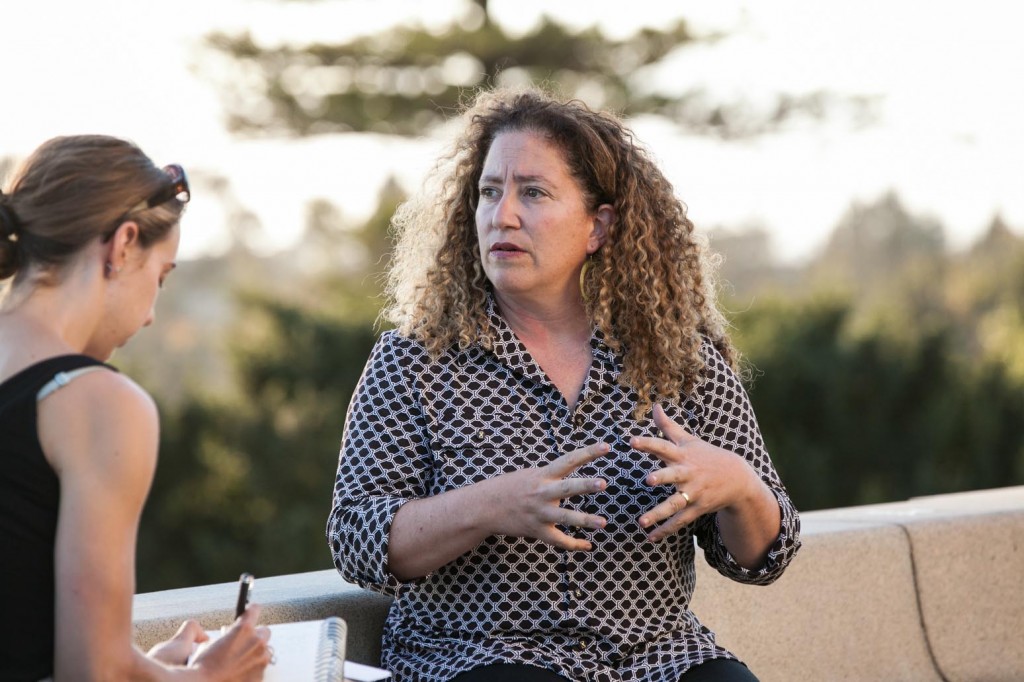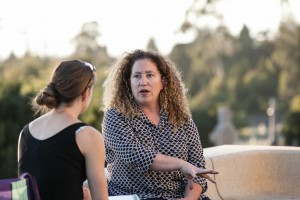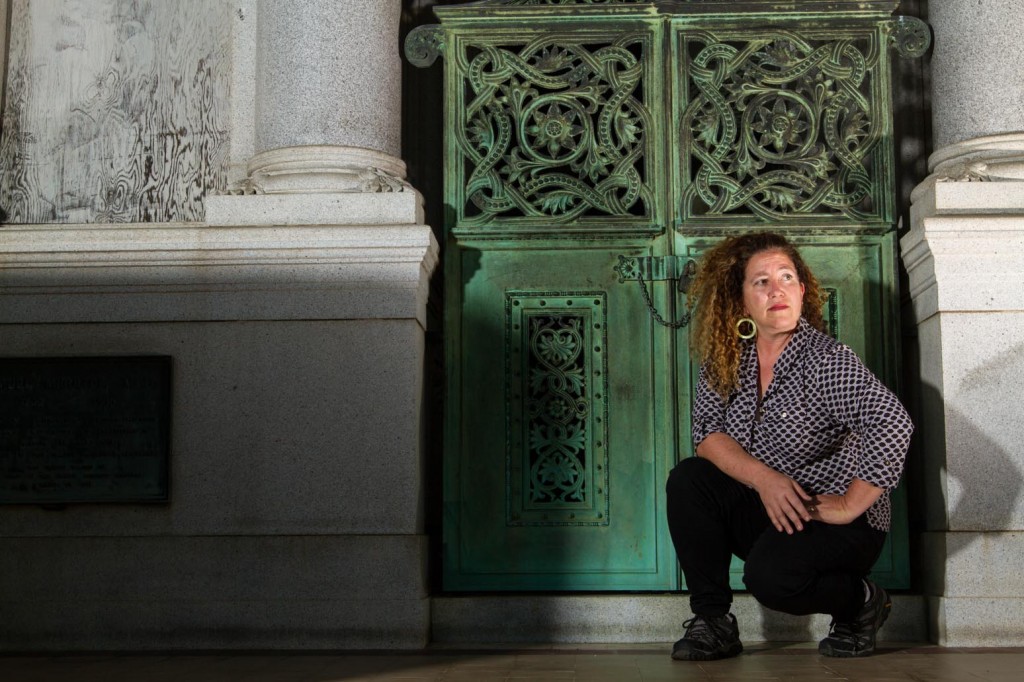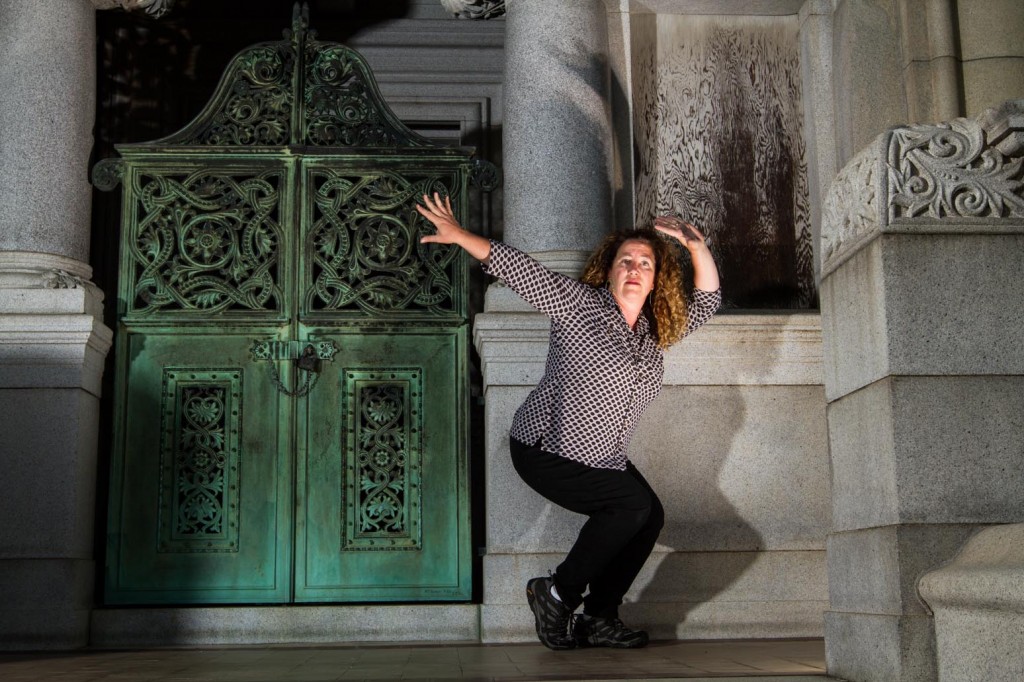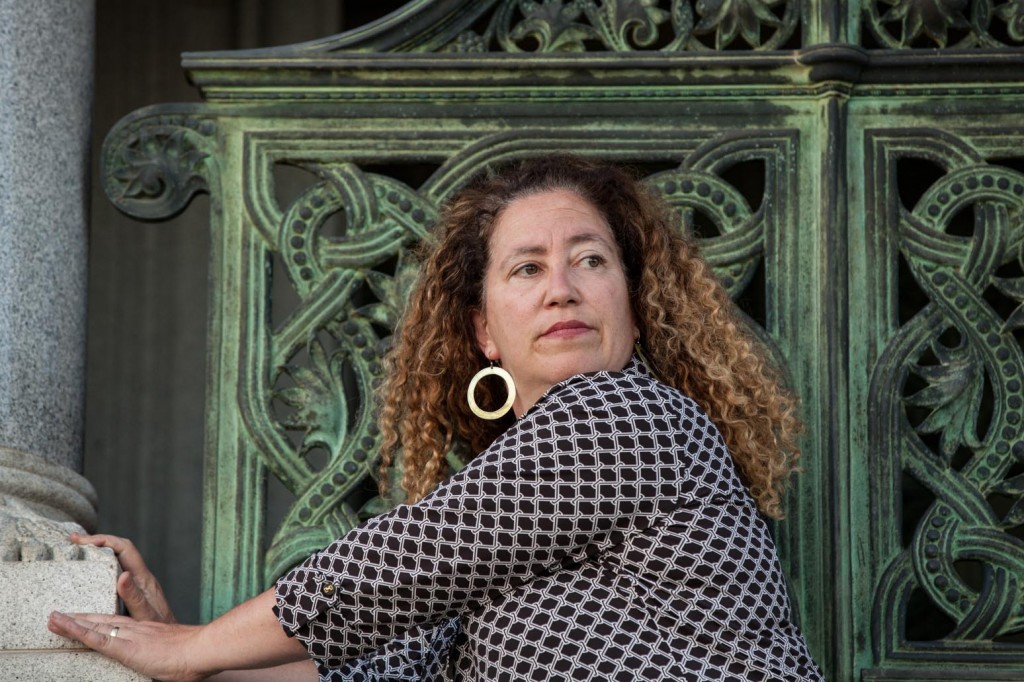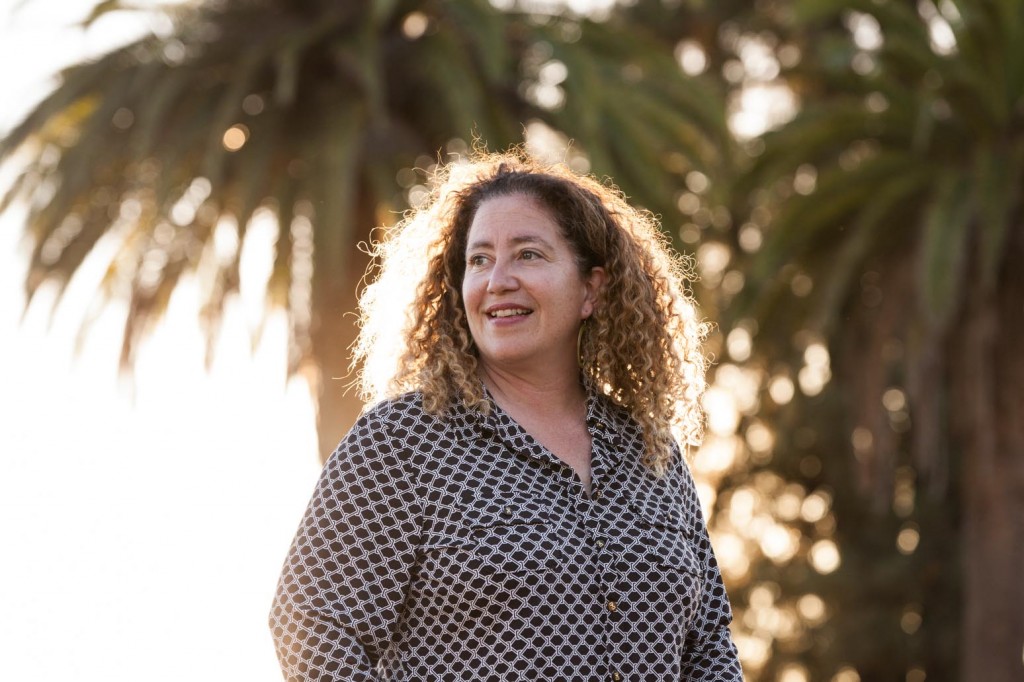Stitching a Complex Tapestry: An Interview with Nina Haft
By Emmaly Wiederholt; Photographs by Gregory Bartning
Nina suggested we meet in Mountain View Cemetery, a beautiful spot between Oakland and Piedmont that sweeps over tombstones and crypts to an epic view of the San Francisco Bay from the top of the hill.
Her location choice in many ways felt emblematic of this entire project; it is a place that embraces the life cycle.
This interview is from the book “Beauty is Experience: Dancing 50 and Beyond.” Click here to learn more about the book, or click here to order your own limited edition copy!
~~
How long have you been dancing and what have been some highlights along the journey?
I was a choreographer from a really early age. I made my first dance piece when I was in second grade. It was a solo to the “White Rabbit” Jefferson Airplane song about tripping, but I thought it was just about Alice in Wonderland. I remember in third or fourth grade corralling my friends and making dances. I think I was nine when I took my first formal dance class, and I fell in love with it. It was ballet, and I loved the structure, the music, everything. I did ballet until I hit puberty, when it became clear ballet didn’t love me back. Thank goodness I got involved in modern dance as a teenager.
It wasn’t until I got to college when I realized I wanted to dance, but by then I felt I couldn’t do it because I didn’t have the right body. It’s been a long journey for me to claim dance.
I spent a big chunk of time doing martial arts. I got a black belt in kung fu. It was through martial arts I decided to love my body and feel good moving the way I move. I don’t think I would be dancing if I had not spent that time doing martial arts. It changed my relationship to movement.
But I’ve been dancing my whole life. Sometimes I just put on music and dance around to feel better. Other times I make dances with other people. It’s the medium where I can feel myself and also be connected to others.
What does your current dance practice look like?
It’s changed recently because I’ve had some problems with my spine. It’s my first injury that’s a harbinger of aging. What I’m learning from this injury are things that feed into my dance practice: pacing, not overdoing it, having consistency, and thinking about what matters to me most.
A lot of my movement practice is through improvisation, which is how I end up developing material for teaching or rehearsal. I also practice Feldenkrais, which has been useful in learning how to work with an injury.
What reasons motivate you to dance and how have they changed?
I don’t think I could have explained why I dance when I was really young. I just felt like I needed to do it, and I needed to do it all the time. Some of it was needing to push my physical self and discover what my boundaries were and what I was capable of. I don’t necessarily mean in terms of virtuosity. It was also in terms of endurance or risk-taking, finding out what happens when I’m exhausted. That’s something I got from martial arts training.
What drives me to dance now is, it helps me to be supremely present. As I live more of life, it feels like stitching and integrating what’s happened to me into a complex tapestry. That’s something dance really facilitates for me.
Do you perceive you’ve achieved some measure of success?
I’ve struggled with that a lot. One of the gifts that’s starting to arise at this phase of my life is, I’m beginning to be able to let go of other people’s ideas or definitions of success. I used to think success meant people gave you a lot of money to make dances so you could travel all over the world, and people who didn’t know you would be really excited to see your work. Success meant I could spend all my time making dances.
I’ve run a company for almost 15 years, and I’ve come to understand that even the most successful people don’t spend all their time making dances. They spend a vast majority of their time doing other things to allow them to make dances. The assumption that if I can get more money and fame, I can spend my time making dances is not the way it always works.
Then it turns out that I love other things in addition to making dances, and these feed my dance-making, like teaching or being connected on the grassroots level to the community. I’m hopeful that maybe in this decade I’ll start to have my own definitions of success and not unconsciously be measuring myself against what I see other people doing.
Do you have a sense of your legacy?
I’ve been teaching long enough that I’ve had the pleasure of watching students launch and chart their own paths. That’s a little bit of a legacy experience, to watch how someone might take my ideas or values and filter them in their own way.
Do you think you’ll continue dancing for the foreseeable future?
I’m not waiting to quit.
What advice would you give to a younger generation of dance artists?
Be open and listen to what feels right. There’s no right way to achieve success and happiness in dance. I’ve seen a lot of young people pursue certain kinds of gigs, thinking, “I need to work with that person because that’ll mean I made it.” Or they train in a certain way that causes them to get injured and then they feel like they can’t dance any longer. That mentality will torpedo your longevity in dance faster and more completely than any rejection anybody could ever hand you.
Any other thoughts?
Unless you become super famous, there’s sometime in your 40s where–and I don’t think this is unique to dancers, but more so to women in general–in this country you become less valued and more invisible once you reach a certain age. There’s a premium put on who’s the next it-girl. In that way, there’s a focus on youth. It’s an ageism in our culture that hits dance especially hard because dance is so tied to the body.
There still is a premium placed on physical virtuosity. Dance can be quickly and readily recognized if it comes in a virtuosic package… “I watched a video on YouTube that was seven seconds long and it was amazing!” We don’t tend to spend even seven minutes watching something quietly unfold.
~~
Nina Otis Haft is artistic director of Nina Haft & Company. Her choreography has been presented in the Bay Area at summerfest/dance, Dancers’ Group Bread and Butter Series, The Bay Area Dance Series, Sundays at Sinai Jewish Culture Series and Festival at the Lake, as well as in New York, Chicago, Minneapolis, Boston, Milwaukee, Los Angeles, Portland and Novosibirsk (Siberia). In addition to teaching modern dance at Shawl-Anderson Dance Center, Nina is on the faculty at the University of San Francisco and at Cal State University Hayward.
This interview is from the book “Beauty is Experience: Dancing 50 and Beyond.” Click here to learn more about the book, or click here to order your own limited edition copy!![]()

